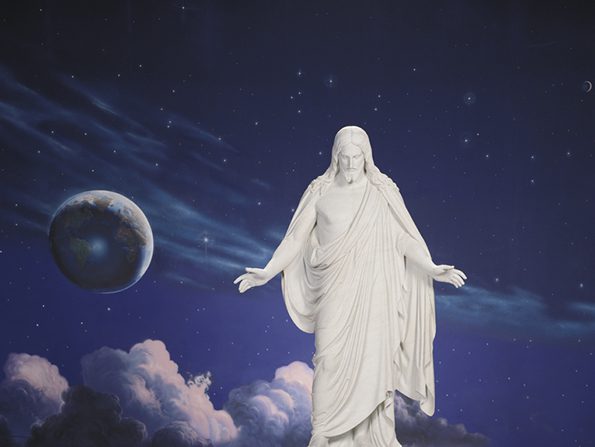
A few months ago, motivated by nothing in particular, I re-read T. E. Shaw’s translation of The Odyssey of Homer. (For those who might be unaware, T. E. Shaw was a pseudonym for T. E. Lawrence, who is otherwise known as “Lawrence of Arabia” — a character who has fascinated me for much of my life. There is much more to him than is contained even in the [great] David Lean film about him.) It was the first time that I’d read any version of the Odyssey in quite a while; I thought that it was time to rekindle my acquaintance with one of the most important books in the history of western civilization.
Last night, one of the reading groups to which my wife and I belong — one to which we’ve belonged for decades now — discussed a well-received and still relatively new translation (2017) of the Odyssey, done by Emily Wilson. So I reread the book. We had a good discussion. I liked Professor Wilson’s translation quite a bit, and I recommend it to anybody who might be interested in reading or re-reading Homer. She has also released a fresh translation of the Iliad (2023), which I haven’t yet seen.

(Wikimedia Commons public domain photograph)
When you keep in mind the fact that the universe as a whole is only (!) 13.7 billion years old, it’s apparent that, in considering this image, we’re peering back to very near the beginning of everything of which we know or can possibly know in the entirety of the physical cosmos.
But, please, take a moment. Try to imagine how very immense the universe is. Our own galaxy, the Milky Way, is estimated to contain somewhere between one hundred billion and four hundred billion stars, and at least a roughly equivalent number of planets. For purposes of consideration, let’s assume that to be somewhat near the cosmic average. Some galaxies are smaller; some are larger. So what we’re seeing in this new NASA image — which represents only a tiny portion of the sky that’s visible from Earth at any given time — is not 1,678 galaxies. It’s 1,678 galaxy groups. I have no idea how many galaxies would be in each group, but let’s arbitrarily say that there are, on average, ten each. That would yield 16,780 galaxies in this small photograph alone. Now, let’s multiply that figure of 16, 780 galaxies by one hundred billion. That would give us a lowball estimate of 1,678,000,000,000,000 stars and planets in this image. Or, using the figure of four hundred billion cited above, we would come up with a total number of 6,712,000,000,000,000 stars and planets.
I am the Lord God Almighty, and Endless is my name. . . .
And worlds without number have I created; . . . and by the Son I created them, which is mine Only Begotten. (Moses 1:3, 33)

Amazingly, something new has just appeared on the never-changing website of the Interpreter Foundation: “Interpreter Radio Show — May 25, 2025, including Doctrine and Covenants in Context for June 16 – June 22 covering D&C 64 to 66”
For the 25 May 2025 iteration of the Interpreter Radio Show, John Thompson and Martin Tanner, with their special guest Val Larsen, discussed Val’s recent article in Interpreter: A Journal of Latter-day Saint Faith and Scholarship and the Come, Follow Me Doctrine & Covenants lesson for June 16 – 22. Their recorded conversation, edited to remove commercial breaks, is now available for your listening pleasure and unrestrained delight. (You can listen in the privacy of your own home, where there are essentially no public legal limits to the way in which you express your joy.)
The Interpreter Radio Show can be heard on Sunday evenings from 7 to 9 PM (MDT), on K-TALK, AM 1640. Or, if you prefer or if your distance from the Salt Lake Valley or your personal schedule leaves you with no practical alternative, you can listen live on the Internet at ktalkmedia.com.
Moreover, I want to remind you that videos of the presentations given at the most recent Interpreter Foundation conference are now available online for the customary Interpreter Foundation fee, which is nothing: “Abraham and His Family in Scripture, History, and Tradition.”
Such events (as well as our books, our journal, and our other productions) do, however, incur unavoidable expenses. So, if you appreciate what we do, if you would like to ensure that we remain able to do it, please feel free to make a tax-deductible donation: Donating to the Interpreter Foundation.

And, finally, just to ensure that certain readers out there don’t become too complacent, here is a quartet of stories, retrieved from the Christopher Hitchens Memorial “How Religion Poisons Everything” File™, that illustrate the stark and terrible fact that the horrors caused by theism have not yet been entirely eliminated:
- “May Is Mental Health Month: How the Church Strives to Improve Mental Health Worldwide: People are using Church resources to improve mental health, grow emotionally resilient and improve marriages”
- “The role faith plays in mental health: report: Sutherland Institute report says religious involvement helps in multiple areas of mental health and life in general”
- “Members, friends of the Church stand as a ‘light to the world’ at Kansas City Royals’ JustServe night: An interfaith youth choir, service project and nonprofit of the year award were all part of this year’s JustServe night”
- And, its title notwithstanding: “Maybe male critics are not experts on religious women’s underclothing: The ‘perfect Mormon stereotype’ vs. ‘the free-thinking rebel’ is a tired dichotomy.”













